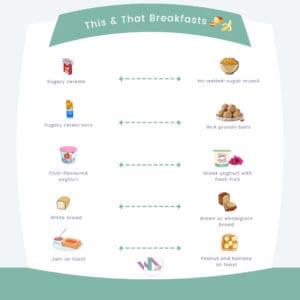
What is Emotional Eating?
We don’t always eat to satisfy physical hunger. Many of us turn to food for comfort, stress relief, or to reward ourselves. And when we do, we tend to reach for comfort in unhealthy foods.
Emotional eating is using food to make yourself feel better – to fill emotional needs, rather than your stomach.
Here are some easy steps you can use to help you deal with your emotional eating.
![]() STEP 1 – Establishing Physical Hunger
STEP 1 – Establishing Physical Hunger
The first step is to create awareness and identify if there is actual physical hunger. Ask yourself, “Do I feel physical hunger?” and use the hunger scale. If ‘6’ or above, don’t eat and move to step 2. If ‘5’ or below, ask yourself if something healthy would satisfy you (e.g. an apple).
![]() STEP 2 – How Do You Feel
STEP 2 – How Do You Feel
Ask yourself, “What am I feeling?” When you reach for food and there is no physical hunger, it is driven by emotional hunger. The next step is to identify what is driving your emotional eating. Write down how you feel and what is on your mind. Be guided to write using your intuition (don’t think logically, allow the words to flow rather than trying to control what comes). Talk with your partner or friend and explain how you feel. Sit with your feelings and acknowledge them without judgement.
![]() STEP 3 – What Do You Need
STEP 3 – What Do You Need
Food is never the answer in an emotional moment so you need to find out, “What do I need?” Maybe you are used to eating sugary foods when you are lonely or stressed. You might feel like your body needs to lie on the sofa and eat food but when you investigate, you will realise your body needs something more nourishing or nurturing. Your body might need more sleep or some physical movement.
![]() STEP 4 – Do You Need External Support
STEP 4 – Do You Need External Support
When you ask yourself “What do I need?”, it may require some form of EXTERNAL support. Many people don’t like to bother others, but reaching out and asking for support is the first step in acknowledging how you feel and what you need.
Once you learn to recognise the signs of emotional eating, then you can start to look at strategies to help you deal with these triggers.
Let us know in the comments below how this helped you.



